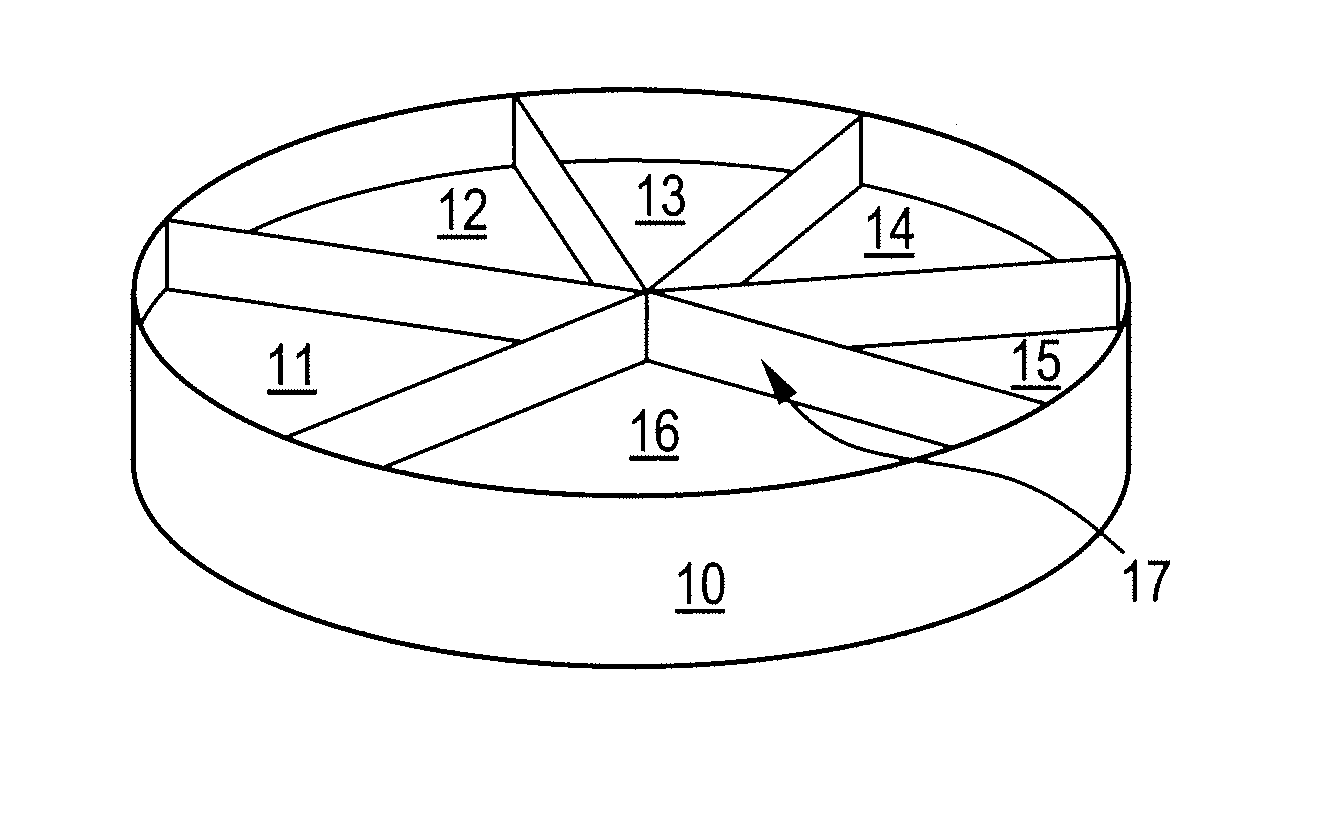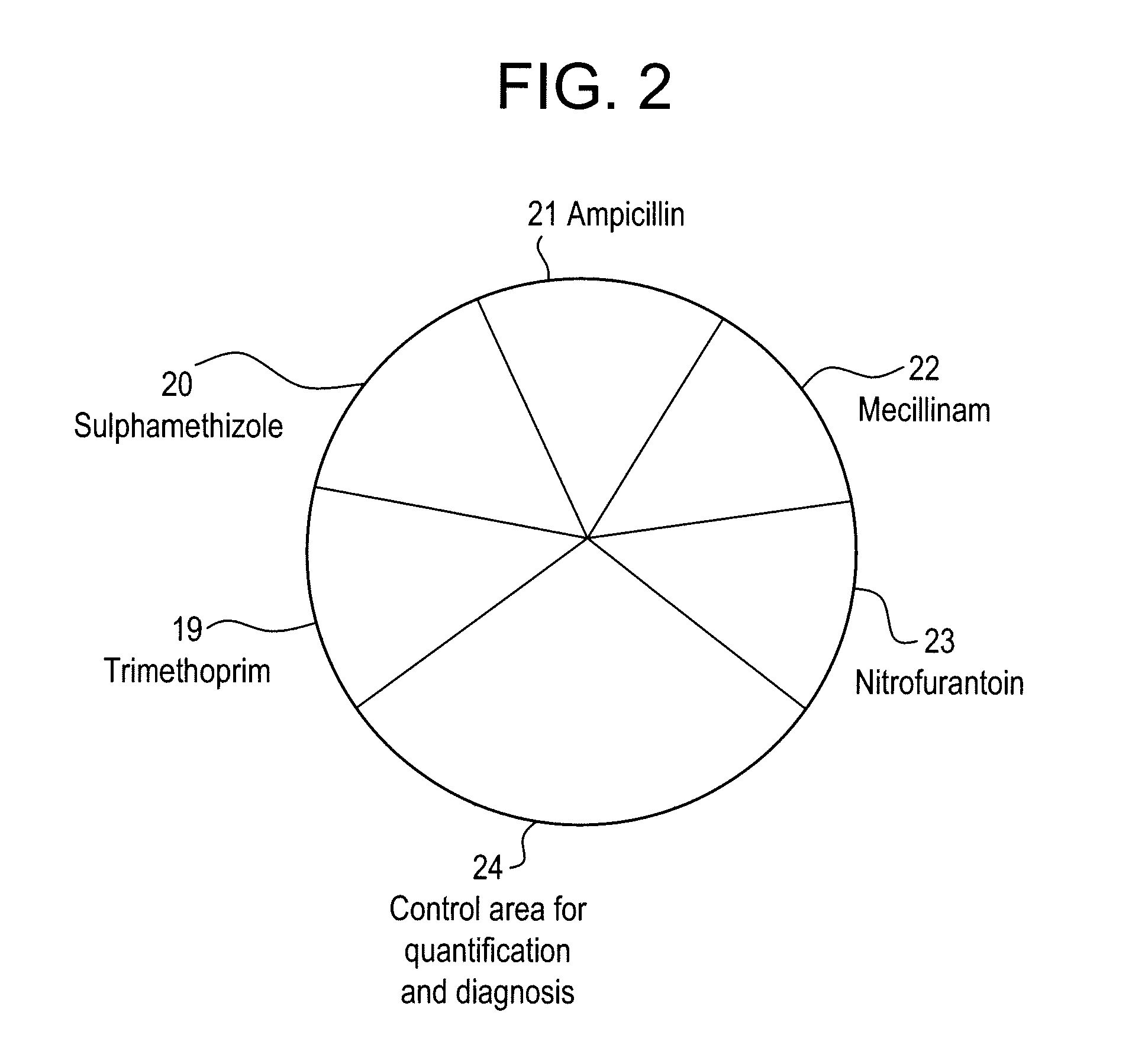Compositions and means for diagnosing microbial infections
- Summary
- Abstract
- Description
- Claims
- Application Information
AI Technical Summary
Benefits of technology
Problems solved by technology
Method used
Image
Examples
example 1
Preparation of a Platform Based on a 6-Compartment Petri Dish
Flexicult
[0221]Iso-sensitest agar was produced and combined with 1.5 g / l of a mixture of chromogenic substrate comprising 5-Bromo-4-chloro-3-indolyl-β-D-galactopyranoside, 6-Chloro-3-indolyl-β-D-galactopyranoside, 5-Bromo-4-chloro-3-indolyl-β-D-glucopyranoside, 5-Bromo-4-chloro-3-indolyl-β-D-glucuronide, 5-Bromo-6-chloro-3-indolyl-phosphate.
[0222]Alternatively Discovery agar (Oxoid, CM 1087) was used.
[0223]Antibiotic solutions were produced: trimethoprime, sulphamethizole, ampillicine, nitrofurantoine, and mecilliname.
[0224]Preparation of hot plates and temperature regulation via PT-100 sensor:
1. The bottles with Iso-sensitest / Discovery agar were melted at 105° C. for 60 min. After melting, the bottles were placed in a water bath at 56° C. for approx. 60 min.
2. The equipment for the filling of Flexicult was prepared: Variomag (Multitherm Stirring Block Thermostat and Telemodul 40 CT were interconnected and then connected t...
example 2
[0240]The stability of the chromogenic agar in Flexicult has been determined by testing Flexicult agars kept up to 4 months in refrigerator ([0241]Agar stability (water content / dryness, form)[0242]Colourisation of bacterial colonies[0243]Susceptibility / resistance towards the antibiotics (sulfamethizole, trimethoprim, ampicillin, nitrofurantoin and mecillinam.
example 3
Clinical Validation
[0244]The Flexicult agar kit has been tested in two GP clinics. Both clinics have 9-10 GP's working in the clinic and perform routine urine culture (either by dipslide or agar plate with subsequent antibiotic disc diffusion susceptibility in certain cases), performed by clinical biochemistry technician staff.
[0245]For the study, the Flexicult plate was inoculated with urine from patients with suspected UTI as based on history and symptoms in parallel with the routine culture systems for each clinic. The plates were incubated at 35-37° C. in ambient atmosphere for 18-24 h (tests performed Friday, which could not be read Saturday, were not included). Plates were read by the technicians and the results recorded (by the use of material provided together with the plates from the Statens Serum Institut: A picture scheme showing the quantities of bacteria on the Flexicult plate, see FIG. 3, and a picture scheme showing the different colony types of urinary pathogens, see...
PUM
 Login to View More
Login to View More Abstract
Description
Claims
Application Information
 Login to View More
Login to View More - R&D
- Intellectual Property
- Life Sciences
- Materials
- Tech Scout
- Unparalleled Data Quality
- Higher Quality Content
- 60% Fewer Hallucinations
Browse by: Latest US Patents, China's latest patents, Technical Efficacy Thesaurus, Application Domain, Technology Topic, Popular Technical Reports.
© 2025 PatSnap. All rights reserved.Legal|Privacy policy|Modern Slavery Act Transparency Statement|Sitemap|About US| Contact US: help@patsnap.com



